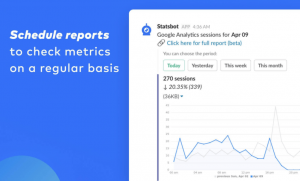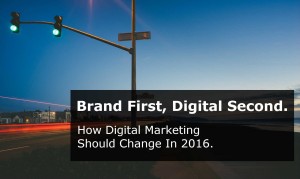
Landing pages are an important tool for increasing sales to your site. They can target a specific segment of your audience and provide an additional layer of personalization in the customer journey. When landing pages are done well, they generate leads and boost conversion rates.
However, landing pages are not always used to their fullest potential. But despite their potential they are often underutilized and neglected in the pursuit of other lead generation strategies.
So what can you do to transform your landing pages into conversion generators?
1. Understanding Your Target Audience
 The most important aspect of creating a successful landing page is identifying the target customer and appealing to them.
The most important aspect of creating a successful landing page is identifying the target customer and appealing to them.
Creating personas of your best customers through a combination of analytics and sales data can give your landing page purpose. Whether you want to reward loyal customers, sell a particular product or just promote a newsletter, personas will help you craft your message and appeal to their pain points more effectively.
A/B testing is a great method to help refine and test the value proposition of your landing page to create better conversion rates. Even if you don’t have enough traffic for effective A/B testing, there are other methods available to ensure that you will target the most receptive persona to your end conversion goal.
2. Clear Call-To-Actions (CTA)

It is important that the first thing your visitors see on your landing page is a clear, unambiguous CTA. It is the primary goal for converting visitors down a particular path, whether it is filling in a form or clicking a button, it needs to be the most important element on the page.
The impact of your CTA will be dependent on both where it is placed and the copy used. This is where A/B testing comes into its own. If you are explaining a concept, product or service, the CTA will be better placed at the bottom of the page – the logical end point once the visitor has seen the information. For a promotion or newsletter reliant on a faster decision, signup would work better at the top of the page.
How you write the copy of the CTA will also determine whether or not it will be successful. Typically, framing the CTA as a benefit will increase conversions. Phrases like ‘free trial’ or ‘save money’ add value and give visitors an incentive to complete the journey.
3. Clean Design & Layout

The phrase “less is more” may approach cliché territory, but it is a good approach to have when it comes to landing pages. Providing a cluttered, copy-heavy landing page can overwhelm the visitor and is a waste of resources. The design of a landing page is as important as CTAs and the content in achieving conversion goals, but it is an often overlooked element when creating one.
Landing pages do not need to be distracting. It can be appealing to add all matter of visual elements, from stock images to data graphs, but it is important to make your CTA the focus of the visitor’s eye line. This can be achieved by providing plenty of white space that is complemented by attention-grabbing headlines, bulleted text and compelling content to provide a clear, succinct overview of your product or service.
4. Video/Images of the Product in Action

Providing imagery and video on your landing page is a prime opportunity to showcase your product or service without the need for visitors to search the relevant content out.
Actively engaging visitors with compelling content can increase their attention span and make them more receptive to engaging with the page.
A high impact image or a short, explanatory video can simplify potentially complex information for the visitor, increasing the likelihood of a conversion.
5. Measure the Effectiveness
 Now you have a landing page, it is important to understand how it is performing and whether it is reaching its conversion goals. A/B testing will have helped refine your messaging, but metrics and analytics will prove useful to its effectiveness.
Now you have a landing page, it is important to understand how it is performing and whether it is reaching its conversion goals. A/B testing will have helped refine your messaging, but metrics and analytics will prove useful to its effectiveness.
The bounce rate, conversion rate and time on page are the most accurate metrics to analyze whether a landing page is performing, but these only provide a snapshot to the effectiveness.
Using visitor replays and dynamic heat maps to complement your analytics data will provide a more insightful view of how your users are interacting with the landing page. This provides you with the information to personalize and optimize the landing page based on the strongest performing elements, leading to a greater chance of conversion.
NB optimization is an ongoing process – testing is continuous.
(Images reproduced under Creative Commons license courtesy of Hans Splinter, Jacob Gube, Pia Kristine, Floriana and Mason Bryant)
Digital & Social Articles on Business 2 Community(135)







